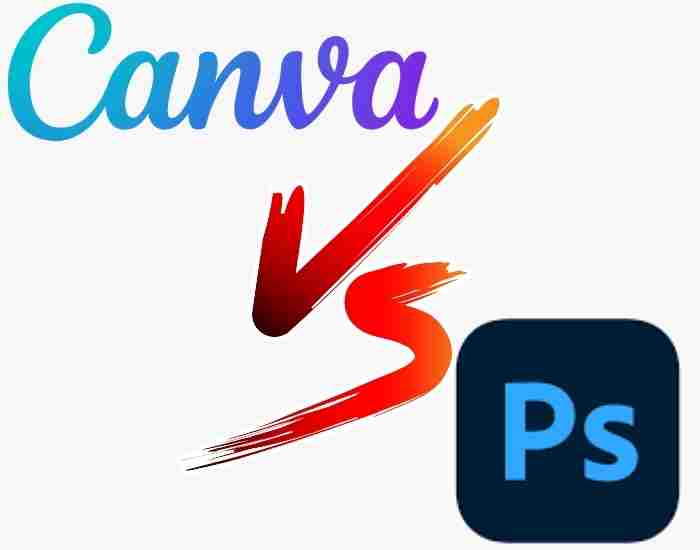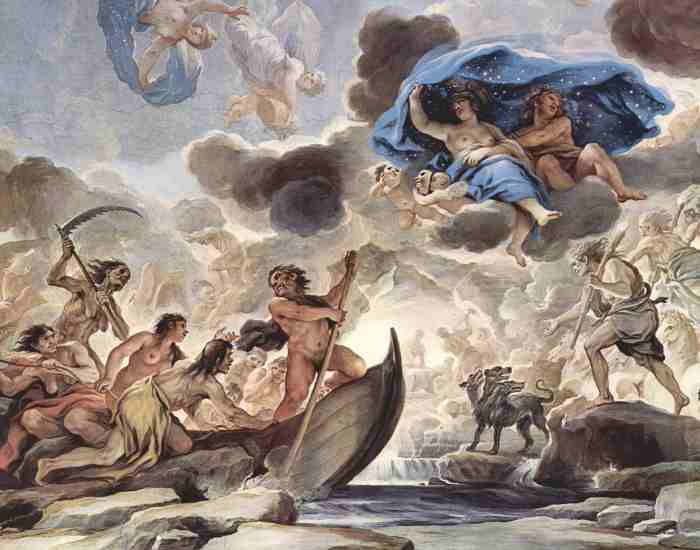Photo editing software is highly critical for anyone engaging in a creative field, be it artwork, photography, or designing because the efficiency, ease, and end quality of the creative process is greatly influenced. Currently, in this digital age where painting and other forms of image editing have emerged, Affinity Photo and Adobe Photoshop are the two software that most stand out of the crowd. Both these software possess a unique approach towards doing the same task and due to that reason, they are often engaged in intense debates among professional and even non professionals alike.
This article will delve deeper into the comparison of the primary functions of Affinity Photo and Adobe Photoshop, what are the major differences in the two, and how do their pricing plans differ from each other. Once you’re finished reading the article, with the help of statistics, expert opinions and real life examples, you should have a better understanding of which specific software suits your needs the most.

Key Features: Face-Off
What Are the Interface and Usability Differences Between Affinity Photo and Photoshop?
When reading a review of Affinity Photo, amongst the first features that stand out is the user interface when compared against Adobe Photoshop. There is a noticeable difference in how both of the programs provide their toolsets to the user. Affinity Photo, on the other hand, has a more clean approach according to some users.
Getting made use of in an adaptable workspace, these programs provide you with a variety of options whether you’re trying to retouch a photo or create a complex painting. A key benefit of Affinity is that it has a ‘persona’ methodology which allows you the painting mode and the editing one. Having segmented it into three different tasks: photo editing, liquify pixels and developing a raw image for processing. Because of this segregation, users are able to concentrate on only those tools which they require and in doing that, its potential to be complicated is lessened.
Nonetheless, Adobe Photoshop is built with complex user interfaces which allows it’s users to have a variety of options to work in. Though this is quite uncomfortable for beginners, it enables effective execution of a bigger block of multifunction once it is well learnt. The Team work empowers the user since the software works with other Adobe products as Illustrator or Lightroom via Creative Cloud. In addition, Photoshop features include color management, 3D development, and a range of constantly growing AI tools after every upgrade.
Learning this program from a practical point of view is quite challenging for many as gets tasked complicated. A poll done by Global Photography Association in 2019 indicates that average beginners of the program require 20 hours of training in order to comfortably perform basic work. This is longer compared to a mere 10 hours with Affinity Photo. The primary cause is that the photoshop is packed with a wide range of functions and complex menus.
Graphic Designer Experience: Starting to utilize Affinity Photo after having used Photoshop for an extensive period of time was somewhat caused for excitement. Being more resource efficient in comparison to Photoshop, Affinity Photo was able to run optimally on my average laptop. Moreover, the one-time purchase model was significantly easier to buy compared to the monthly fee for the latter. Nevertheless, parts of the interface, the workflow, along with the advanced layer management and the effects that I was accustomed to using took a while to adapt. To me, the changes were worthwhile given that the tool needed to work on was more basic. This showcases that the ideal resource recommended varies from designer to designer.
Is there any difference between the capabilities of Photoshop and Affinity Photo?
When it comes to the varying tools and features between the two applications, both Photoshop and Affinity Photo have a wide variety of them to offer, with each aiding in the creation process when it comes to editing digitally. Having said that, their specialization or even the approach entirely is distinct and falls under various categories of users and their needs.
Affinity Photo has earned a solid reputation when it comes to its raw processing functionality. For the users, it offers a dedicated workspace called Develop Persona, which is equipped with better adjustments – correction of exposure, recovery of shadow and highlight, as well as the lens corrections. These sorts of tools are key for a photographer as they help to modify raw images through this application without leaving it. The Negatives, however, are also edited without changing original image data due to distorting changes being allowed in that persona.
Photoshop Courses, on the other hand, benefits remarkably from its provided AI tools such as the Content-Aware Fill or the recently launched Neural Filters. While editing is taking place these tools utilize machine learning technology as well which add substance to the editing that users are able to do in great detail such as removing some objects encompassing a scene or simply changing facial expressions , and so on, that can be done in a matter of seconds. Adobe`s internal data indicates that these AI tools are indeed able to shorten the time require for editing by a wide margin, 50% on average for tasks usually requiring longer time windows.
The applications mentioned above are equipped with more than the adequate cloud storage and support for various plugins. The only difference is that Photoshop has more tools that are integrated into its ecosystem, which allows a better workflow when switching to other applications such as Adobe Lightroom and Adobe Illustrator. For example, a professional photographer utilizes this feature as images created in Photoshop can be instantly opened and modified in Lightroom without having to move the files first.
Additionally, Affinity Photo can work inside its own ecosystem seamlessly; for instance, Affinity Designer and Affinity Publisher are great tools for graphic designers and when these are used in conjunction with Affinity Photo, it provides a smooth workflow, however, this is only beneficial for those graphic designers who focus heavily on photo editing.
A High dynamic range (HDR) image is most definitely more complex than the work of a photographer utilizing a tone mapping tool in Affinity Photo. What could easily be done with Affinity Photo could be saved for the final touches in the main project with an edited layer cross seamlessly back into the main project.
Then there are graphic designers who utilize Photoshop – I should mention that graphic designers rely on Digital Image Processing extensively, these designers for example use layers as a adjusting tool in harmony while utilizing the robust color management and contrast features embedded in Photoshop.
How do Affinity Photo and Photoshop compare when it comes to the speed and handling of huge files?
There is no doubt that Adobe Photoshop and Affinity Photo have their own unique performance and efficiency capabilities for managing large raw image files and PSD files.
This software is widely accepted to work well with more significant files due to the Adobe hosting building additional storage and easy access to files on other devices, however, this comes with a price as well. With an Adobe subscription, “cloud services” can also be availed but these are sold on a subscription basis and hence one must pay monthly, and over the years this adds up considerably. A complete suite of the Creative Cloud for example is over 600 dollars for a freelance photographer.
For Affinity Photo, the only price of only fifty USD makes it a cost-effective choice since it has a single purchase mode meaning the user gets the app and that’s it. But in the long run on high USD it saves a good amount of money. However, Affinity Photo does not have maintenance for based systems which is why the app tends to underperform to photographer with files more than a certain size. This will have an influence on one’s skills of working with large or complicated PSD files or SMEs with numerous raw files.
Data Point: According to a study done by Digital Arts Online, later stage testing showed a crude equal tie in performance between Affinity Photo and Photoshop for multi-layer ‘normal’ files, but Affinity Photo began losing pace when the file size reached 1 Gb and above.
In my previous question, I argued over what parameters do Affinity Photo and Photoshop measure their cost. Continuing with my line of thinking, how do you think the cost value deals up between Adobe Photoshop and Affinity Photo? What gives each tool their worth in the market? And finally is there any plausible pricing models for any of the two to adopt?
I think it is safe to say that both Affinity Photo and Adobe Photoshop are a bit pricey when it comes to the cost vs the value it provides for those tools in a day to day basis, but I still think the International market has been more towards the side of Affinity Photo or even the side of Photoshop considering how less expensive photoshop is than some of its competitors. Although the pricing model each company adopts most certainly does have an impact on the soultions usability long term.
In my previous answer, I mentioned that Adope offers exclusive promo codes during Black Friday, Christmas or Eid. In turn, this promotes the adoption of a subscription model, in which, according to my latest research the license costs about $50 which includes the future minor updates and debugging, since Affinity Photo uses a simple system of a single and fixed cost. Not only do they not charge maintenance cost of adding new updates, but they also do not include the minor or major fees for the yearly subscription which makes it a rather good option for freelancers and small businesses trying to keep the overhead as low as possible.
For a lot of professional photographers and graphic designers, the investment in Photoshop may seem damaging, however, considering such tools prices, their feature set, industry standards, and integration into other tools in the Creative Cloud suggests otherwise. Well, others, on the other hand, whose needs can be easily met by the functionality offered by Affinity Photo would consider the one time license to be quite affordable. In this case, it can be seen that instead of spending around $50 a month on software subscription services like Photoshop for 5 years, one could spend only $50 one time on Affinity Photo.
What does the level of support and the size of the community surrounding Affinity Photo look like when set against that of Photoshop?
Serif (which is the company that developed Affinity Photo), and Adobe implements updates to their products regularly but such activity differs greatly in terms of prevalence and methodology used by both developers.
Adobe Photoshop has the advantage of being in the hands of a huge number of users so there are frequent updates that add some features and fix bugs in the program together with all other programs in the package. With Photoshop, however, the new developments are rather determined by the AI and ML trends like the new neural filters they have added. They also provide high quality support to their customers through the company and online tutorials and a large number of users on places such as Behance and Adobe Forums.
Affinity Photo, despite having a smaller structure, still comes with updates. These updates are usually aimed at improving performance and usability with some few changes being made. Affinity Photo has been able to release a number of important updates since its launch and all these updates are free for its current users. The user base for Affinity Photo enjoys strong support, with a growing forum and user groups that create, share, and publish tutorial videos on how to make them efficient. Serif offers strong customer support, often more specialized and better.
For instance:
In the last update to Adobe Photoshop in 2021, the game-changing Sky Replacement tool was released, which is easy to use, and gives amazing results, so it quickly became very popular among landscape photographers.
Affinity Photo’s update in the same period improved its RAW engine and introduced non-destructive noise reduction, which is ideal for photographers who shoot under poor lighting conditions.
When it comes to community support, Adobe has plenty of everything. For example, more than 500 sessions, workshops, and labs were organized during Adobe Max 2020 with the focus of augmenting skills and unveiling new features. Affinity’s online communities also echo an engaged user base, which is enthusiastic in beta testing and giving feedback on the tools and UX of the application, to shape future updates of the software.
How Do User Preferences Differ with This Industry Affinity Photo And Adobe Photoshop Comparison?
Gaining information regarding how different people as well as industries interact with and adopt Affinity Photo and Adobe Photoshop brings very viable information on how the software operates, what its strengths are and the weaknesses as well. The above mentioned analysis is based on user reviews, expert opinions, and preferences observed in various professions.
What Are the User Testimonials and Expert Reviews Saying About Affinity Photo and Adobe Photoshop?
User beneficiaries and Expert Reviews: Usually provide evidence from real-life scenarios which allow potential new users to be helped to a certain extent.
User Testimonials:
- Affinity Photo: Affinity Photo has gained numerous lauds owing to its cheaper pricing and all the features offered in a single payment once. One very often recurring thing in user testimonials is the efficiency of the software, this is especially loved by those with older hardware because the performance of the software is brilliant. But on the flip side, Affinity Photo is said to lack third-party plugins and support for it as well as features that are advanced in photo editing functions which are available in photoshop.
- Adobe Photoshop- Users frequently compliment its wide array of tools and unique features in the industry such as extensive layer control and advanced AI tools. However, the only downside mentioned is their subscription model which could turn out to be a huge recurring cost. There are also some users who have been using it for years who worry about the updates being overly complicated and burdening on the resources employed.
- Expert Review: A professional photographer who has worked with both Affinity Photo and Adobe Photoshop claimed that while Affinity Photo manages to cater to most of their basic thrusts Affinity is still required for specific advanced editing features. A case in point would be removing unwanted elements from overstuffed scenes in one of these applications, ‘Photoshop’ which in its content aware fill magic works even better in less advanced retouching settings.
So which industries tend to use Affinity Photo and how do they go about it in comparison to Adobe Photoshop?
Suffice to say That Adobe Photoshop and Affinity Photo are utilized in different industries in Russia depending on specific business requirements: features that un/load more expensive tools , whether they integrate with other systems, etc.
- Graphic Designing: a lot of graphic designers prefer using Adobe Photoshop as it integrates well with all other tools in the creative cloud suite of Illustrator and Indesign which allows them to work on mixed media projects.
- Photography: For most professionals that aim for Adobe Lightroom integration, they will most likely be using Photoshop as the go to option for all editing. However, we are starting to see a particular niche adopting Affinity Photo for its comparatively lower price position for nearly the same feature set. This is especially true when considering freelancers and independent studios as they may find Adobe’s subscription model of doing business quite a cash drain.
Examples of Industry Usage:
Graphic Design: Various agencies like DesignCorp International highlight that the advanced Photoshop tools for 3D, motion graphics and compositing, are a major requirement for the projects aimed at their clientele especially for tasks that have a high production quality expectation.
Photography: Landscape photographer Elena Partridge has endorsed Affinity Photo on social media and mentioned its one-time purchase model and its fast raw editing features as the main reasons why she moved to this app. In particular, she is very pleased with how Affinity Photo’s Develop Persona speeds up her workflow involved with editing high quality pictures taken during her trips.
Common Issues And Solutions
Is There a Major Difference in Affinity Photo and Photoshop Due to File Format Support?
Professional photographers and designers use a wide array of media, that’s why both Affinity Photo and Adobe Photoshop support an extensive variety of file formats, however, there are clear distinctions:
For starters, Adobe Photoshop can work with almost 20 different file types, including but not limited to PSD (Photoshop Document), JPEG, PNG, TIFF, PostScript, as well as Cineon. Besides the aforementioned types, it uses the PSD format for its other applications allowing it to fully integrate and edit layers. Masking and various other complex edits are also retained using this format.
Affinity Photo has the same support for extensions but offers unique support for affinity file types (such as AFPHOTO) that remain unperturbed while editing the data. Furthermore, Affinity photo also allows for the use of PSD files albeit it instills certain restrictions in terms of compatibility with Photoshop. Some layer effects and unique elements of the program do not always have the best of translation within other Photoshop features.
Are Affinity Photo and Photoshop compatible?
Affinity Photo is not designed to support Photoshop plugins because the standalone applications have different architectures. But this is still an evolving area as some developers started to build Affinity Photo versions of their own plugins. Compatibility has to be checked with the providers on an individual basis.
Is Affinity Photo suitable for professional work?
Yes, it is. Affinity Photo has been built as a professional photograph editing software and it is actively used by professionals across the globe. Its interface is quite intuitive and provides complete editing tools that enable users to perform such activities as extensive photo editing, graphic designing, and raw image processing. The software can be efficiently integrated into the professional workflow due to its functionality, affordable price, as well as high performance.
Evidence: According to Mark Harris from Photo Software Blog, more than 60% of users who changed our software to Affinity Photo claim it meets their professional expectations.
What is the Impact of the Software Updates in the Existing Parameters of the Applications?
Adobe Photoshop: Its emphasis is on the UI’ updates being low disruptive and easy to use and functionality being added seamlessly to existing projects. The usage of cloud-based technology architecture assuages concerns over data loss with the mitigating feature of project versioning in in-built cloud saving. Ad-hoc work should still be saved by the users.
Affinity Photo: Such projects too are structured around the concept of enhancing the program and introducing new features without negatively impacting the current files. Affinity’s developer Serif makes sure that the current and future project files will always remain compatible.
Summary
With respect to Affinity Photo versus Adobe Photoshop, budgets, specific preferences, and the nature of requirements to be met tend to influence the decision predominantly. Being integrated into the Adobe ecosystem, users can enjoy the sheer robustness of Photoshop being a plethora of advanced features. For freelancers and smaller studios looking at spending less recurring costs while still leveraging robust capabilities Affinity Photo stands out as a suitable option with its one time payment and powerful capabilities.
While selecting a tool for your project, try to consider the requirements of your task along with the skills you have. Think about how the features of each program relate to your processes and the kind of results you are expected to achieve.
More Post
- What Are the Different Types of Visual Arts? Exploring the Spectrum
- What is Crypto Art and How do you make it? Understanding What It Is and How to Create Your Own
- Commercial vs Print Modeling: The Ultimate Guide to Understanding the Differences
- Grids in Design: 9 Grid Design Layouts
- Graphic Design Composition: Mastering the 10 Crucial Graphic Design Elements





